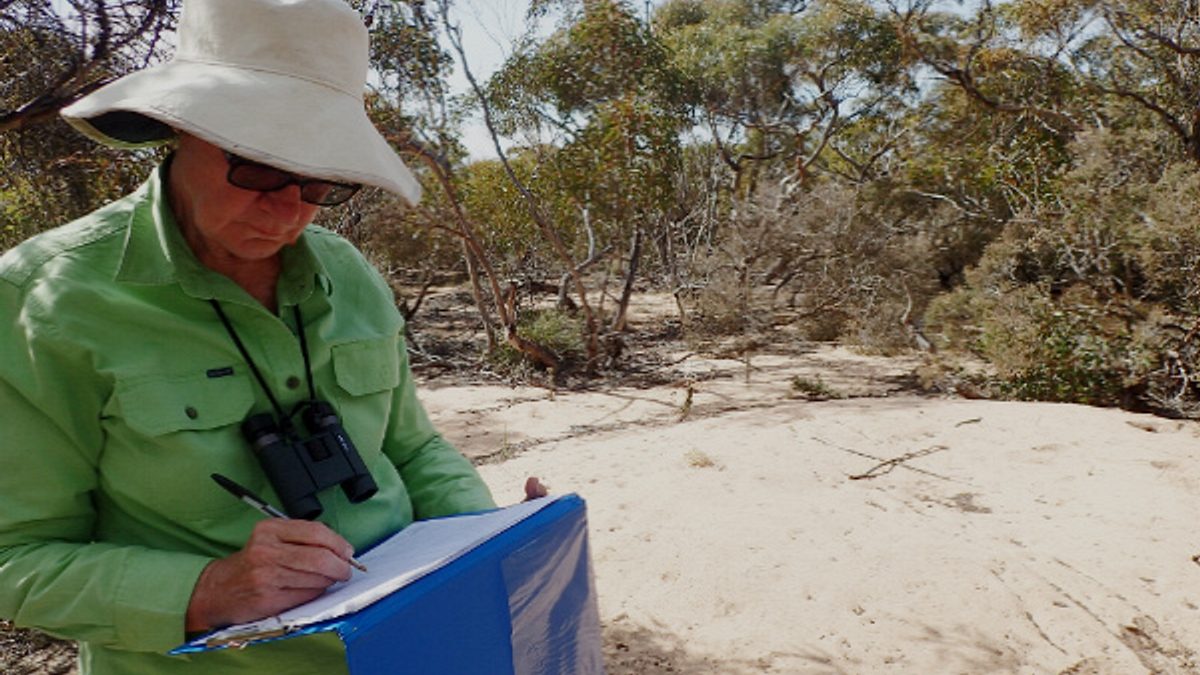Slow start to malleefowl breeding season
A dedicated team of volunteers and Natural Resources staff have found that malleefowl nesting activity on Eyre Peninsula has reduced from ten known active malleefowl mounds last year to only six this season.
The annual monitoring of malleefowl mounds involves walking kilometres to check known mounds in conservation reserves for the tell-tail signs of the birds’ breeding activity, such as massive piles of sand, pebbles and leaf litter over a typical nesting mound three to five metres round and one metre high.
Natural Resources Education Officer Barbara Murphy said it is hot work trekking through mallee scrub at this time of year but very rewarding to find a freshly scaped malleefowl mound and to catch a glimpse of the iconic bird.
“Monitoring all of the known sites would not be possible without our dedicated volunteers, some who have been monitoring mounds in their local area for over two decades,” she said.
Malleefowl are a threatened species, vulnerable to extinction, and their numbers are in decline across Eyre Peninsula. All monitoring data from Eyre Peninsula is fed back to the National Malleefowl Recovery Team. Major threats are climate change, habitat decline, wildfire, and predation by foxes and feral cats.
Collecting data on malleefowl breeding activity is important for estimating malleefowl population numbers and as an indication of the ‘health’ of the malleefowl habitat.
PhD Researcher Peri Stenhouse has been closely monitoring Eyre Peninsula malleefowl activity since 2016.
“My research is trying to fill knowledge gaps around the long-term movement of malleefowl. The question is, if there is a drought or a fire which makes one habitat unliveable, are malleefowl able to move to and recolonise new habitat patches? Also, what size and kind of habitat do they use when they move?”
“Malleefowl breeding activity might be down from ten active mounds to six this year but this does not mean there are only six pairs of malleefowl breeding! These are just the ones we know about,” Peri said.
Please report any active malleefowl mounds to peri.stenhouse@adelaide.edu.auInterested in joining the EP malleefowl monitoring team? Contact Barbara.Murphy2@sa.gov.au



